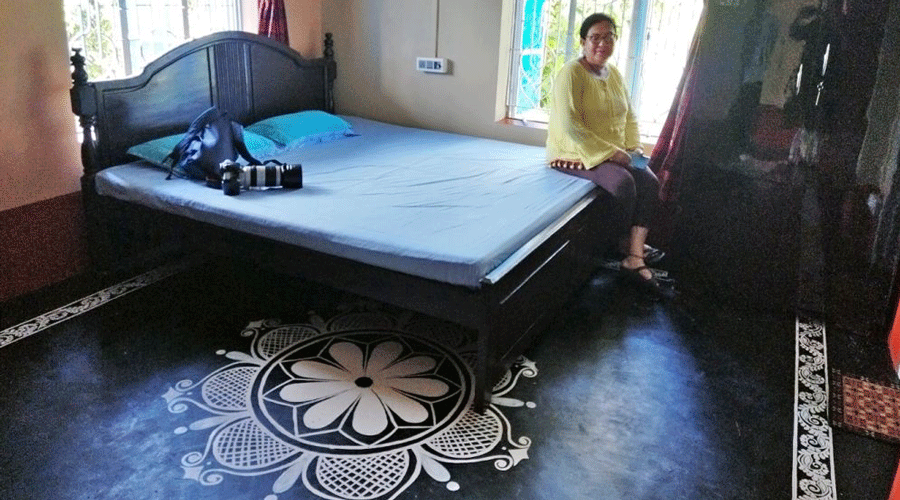Prankrishna Maity and his wife from Ramnagarabadh village in Patharpratima in the Sunderbans, South 24-Parganas, have raised a brick and mortar two-storey house. In the surrounding space, they grow bottle gourds, bitter gourds, ladies-finger, pumpkins and a variety of vegetables. A hibiscus bush is in full bloom. Some hens of Kadaknath species roam around.
A cow is tied in the barn. Prankrishna’s wife cooks a wholesome, healthy meal at the hearth. There are freshly laid eggs from the hen, milk has been curdled to make fresh paneer.
Maity has prepared two rooms in his house for tourists. A western-style washroom is attached to those. It cost him Rs 1.2 lakh to build the washrooms along with a septic tank. The rooms have double beds and cupboards. The furniture looks new.
“If anyone wants to stay here for a few days and enjoy the village life, I am willing to rent it out,” said Maity. He will charge Rs 1,200 per head per day.
The tariff includes homecooked meals.
Some villages in the Sunderbans are being developed to promote farm tourism and homestay with stress on responsible and conservation-based tourism. Every choice one makes has an impact on climate.
One can drive down to Ramnagarabadh village in the morning from Kolkata, spend a day there at a homestay, lend a hand in the fields, learn how to make compost, see how vegetables are grown, help in weeding out the field and be a part of the local culture.
The idea of renting out a room in one’s house at Ramagarabadh village is catching on.
Prankrishna’s brother Shatrughna, who stays 300 metres away, has also prepared a room in his house for homestay. “We did not know at first that people from the city would want to come and live in our house. You can see my house is quite simple. We barely have space. But I have kept a separate room for guests. I was told that a bathroom will be needed along with the room. So I built that too. There is a verandah too with the room,” he said.
They were also guided on how to get the furniture done and what the colours of the bedspread and curtains should be. Within six months, a cluster of 10 to 12 homestays will come up at Ramagarabadh.
The Maitys were guided by the NGO Nature, Environment and Wildlife Society (NEWS), who are giving around Rs 2 lakh to villagers who are willing to build homestays.
Initially, NEWS did a survey of the village visiting houses and asking family members if they would be comfortable having guests at their homes. “I asked them if they would be comfortable with tourists drinking and smoking around them. If they wanted to eat pork, would they mind? These are real issues while developing homestays,” said Ajanta Dey of News.
The state government is also actively promoting homestays in the Sunderbans. The idea is to take the tourist pressure away from Sajnekhali and Bakkhali, among the most popular destinations in the Sunderbans.
“There is much more to the Sunderbans than tiger reserves. There is the Bay of Bengal, the cultural and natural beauty of the Sunderbans, the red crab beach, the ASI-protected monuments like Jatar Deul, Kushinagar Museum and other interesting sites,” said Dey.
